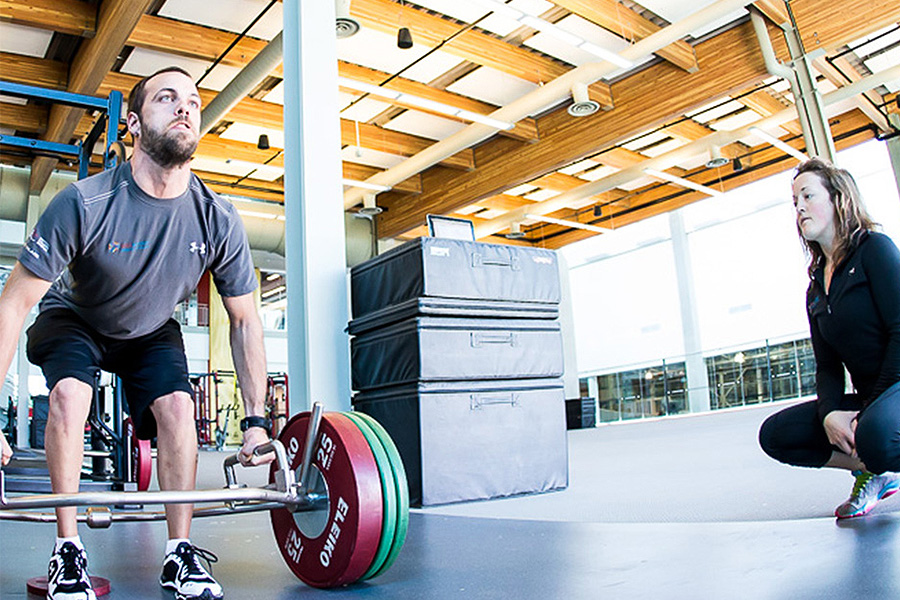
It only takes one inquiring mind to pose an interesting question. With that, a world of possibility opens up to anyone willing to seek the answer.
For Tessa Gallinger, CSI Calgary Strength and Conditioning Coach, the question was simply, can high-velocity training cause muscle adaption in individuals with cerebral palsy (CP)?
More specifically, Gallinger, who works with para-swimming, para-cycling, para-triathlon, goalball and the University of Calgary Dinos Swim Team, wanted to know if high-velocity training would cause an increase in muscle length, in this case one of the calf muscles.
The reasoning was, if increased muscle length occurs, which should happen with high-velocity training, then the muscle can shorten faster, leading to increased power output and improved performance. That improved performance is the end goal for researchers like Gallinger. “We need to understand how the training we are implementing impacts athlete performance,” she says.
Gallinger’s research question was new to the world of CP and muscle adaptation. “Previous research has shown that strength training is beneficial for improving gait and functional walking performance for people with CP,” explains Gallinger, who specializes in adaptive strength. “But there is none that investigates whether high-velocity training has any impact.” She adds that much of the research in this field is done in a clinical setting, and not in the high-performance sport realm.
And so began Gallinger’s master’s thesis. She took eight young, recreationally active adults with CP through ten weeks of high-velocity training (for example sprinting, agility training, medicine ball throws) and utilized ultrasound imaging to measure changes in muscle length.
The preliminary findings indicated that muscle length can increase with this type of training in individuals with CP. In some subjects there was no change in muscle length, however in those individuals Gallinger saw an optimal shift in the force-length relationship, indicating an increase in sarcomeres in series – the fundamental unit of muscle structure.
It’s a small answer to a small question, but most importantly it leads to further, bigger questions that need answers too. Does the change in muscle length lead to increased power output? Is there any functional change or impact to performance from high-velocity training for individuals with CP?
Gallinger won an award for her research, of which she presented a portion at the 2018 Canadian Society for Exercise Physiology (CSEP ) conference in October. The award, the CSEP Certified Member Presentation Award, recognizes outstanding research or work conducted by a certified member of CSEP. She was also invited to present her research findings at the Alberta Children’s Hospital to the Neuromotor Impairment Round in September this year.
The recognition is nice but for Gallinger the ‘big picture’ outcome was something a little less tangible. “The biggest thing for me and the clinicians was seeing that people with CP could do this type of training,” says Gallinger. “And they really enjoyed it!”
In a world where inclusion is a challenge, Gallinger says many of the study participants were ostracized from gym class as youngsters. The result of exclusion is less opportunity to learn and grow and less opportunity for others to understand CP and how capable those who live with it really are. Someday, with the world’s Gallingers answering more interesting questions, there could be improved inclusion, integration and understanding for individuals with CP. The ripples that travel beyond the original research are cause for great optimism.
Inch by inch, research, like that done by Gallinger and her colleagues, helps us acknowledge the desire within all of us to continually strive to be better, no matter our circumstance.
Canadian Sport Institute Calgary: @csicalgary
Written by Kristina Groves: @kngrover
Photo by: Dave Holland @csicalgaryphoto
15/11/18
